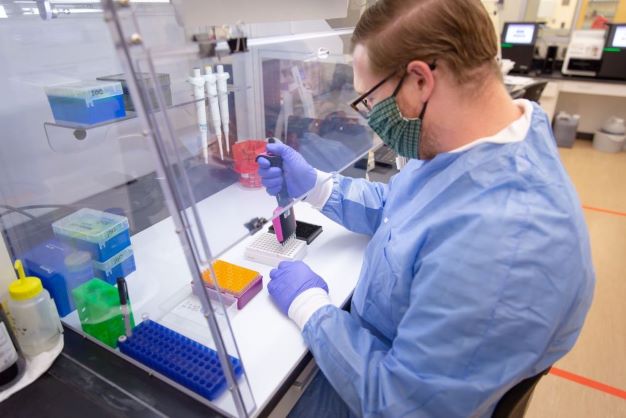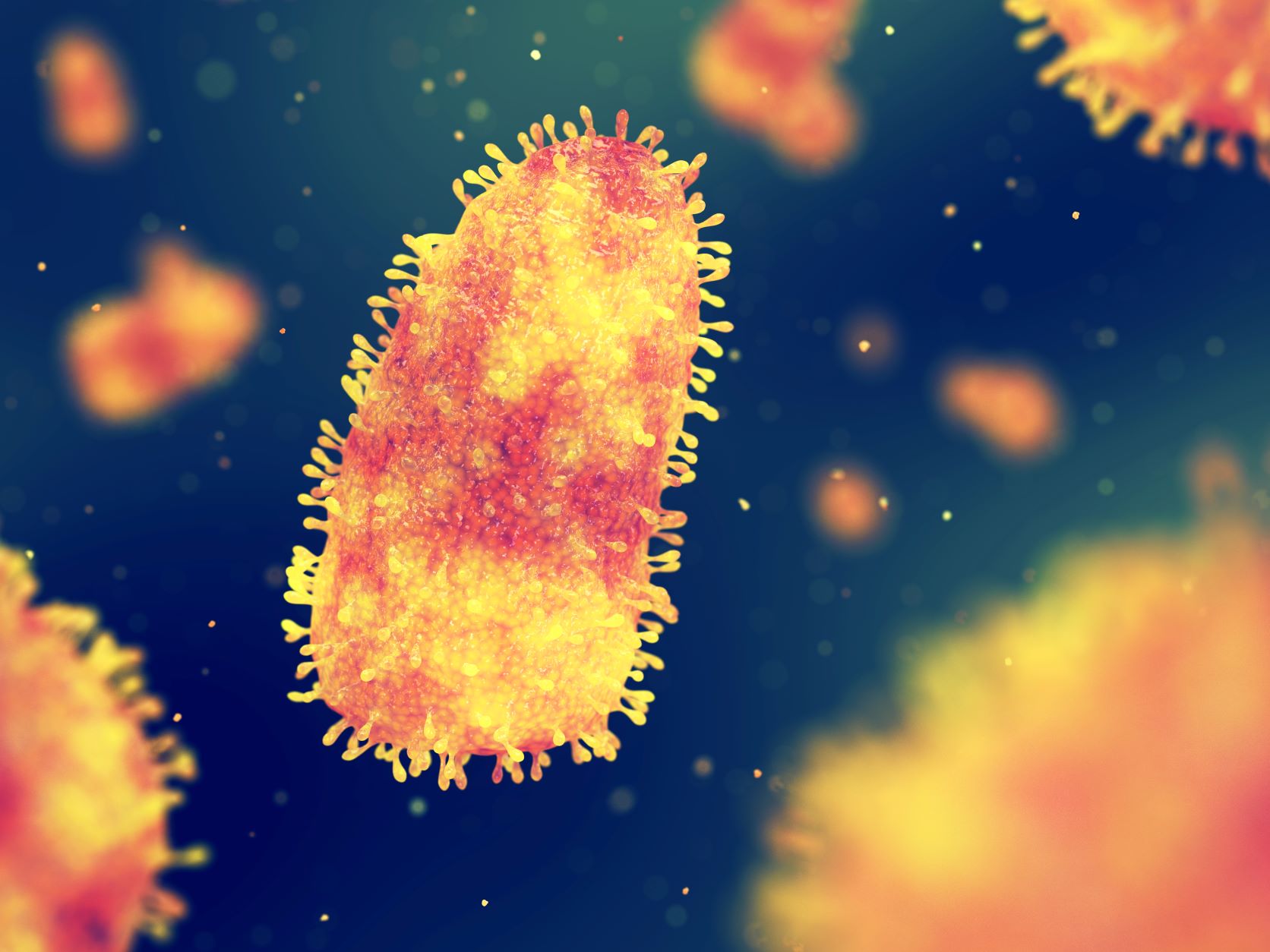About the Infectious Disease Laboratory
The Infectious Disease Laboratory, a section of the Minnesota Public Health Laboratory, receives and tests biological specimens for:
 Diagnosis of disease,
Diagnosis of disease,- Monitoring for public health threats,
- Disease outbreak prevention and control,
- Special public health projects, and
- Infectious disease research.
Additionally, we collaborate with the Environmental Laboratory on Laboratory Emergency Preparedness by managing Emergency Preparedness and Response. We also established and maintain the Minnesota Laboratory System, which provides training, technical assistance and testing protocols to a network of clinical laboratories throughout Minnesota.
The above functions are carried out by five laboratory units: Enterics, Microbiology, Sequencing and Bioinformatics, Emergency Preparedness and Response, and Virology/Serology. Read more about their roles in our Units of the Infectious Disease Laboratory page.
Diagnosis of disease
Health care providers submit specimens to the laboratory in order to diagnose infectious disease in individual patients. In 2021, we expanded our operations to test 119,452 samples, 95,724 of which were for the COVID-19 virus. Submission requirements vary by test; submitters must review the Test Directory and fill out the relevant forms before collecting and shipping specimens.
 Specimens may also be submitted by health care providers as required by the Communicable Disease Reporting Rule (Minnesota Rules Parts 4605.7000 to 4605.7900), or by those who are part of an infectious disease investigation. These biological specimens are most commonly stool, blood, and respiratory secretions or swabs, but might include any tissue, secretion or body fluid. Our laboratory tests the specimens to detect and characterize infectious disease-causing organisms, including bacteria, viruses, parasites, and fungi.
Specimens may also be submitted by health care providers as required by the Communicable Disease Reporting Rule (Minnesota Rules Parts 4605.7000 to 4605.7900), or by those who are part of an infectious disease investigation. These biological specimens are most commonly stool, blood, and respiratory secretions or swabs, but might include any tissue, secretion or body fluid. Our laboratory tests the specimens to detect and characterize infectious disease-causing organisms, including bacteria, viruses, parasites, and fungi.
Monitoring for public health threats
The Infectious Disease Lab conducts statewide monitoring for the emergence of public health threats. Also, we play a key role in the CDC’s Emerging Infections Program (EIP), which focuses on identifying and controlling new or previously unrecognized infectious disease problems. This testing enables our lab to detect disease outbreaks and assess the public health threats posed by newly identified infectious agents.
Disease outbreak prevention and control
The Public Health Lab uses high-tech molecular methods such as DNA fingerprinting, amplification, and sequencing to rapidly detect disease outbreaks and identify specific infectious agents. The use of DNA subtyping—or "fingerprinting"—enables our scientists to more quickly detect and determine the sources of airborne, foodborne, and waterborne disease outbreaks.
 Detecting outbreaks early is crucial. It sharply focuses the scope of the epidemiological investigation, significantly limits the number of people that become ill, and improves the timeliness and cost-effectiveness of the public health intervention.
Detecting outbreaks early is crucial. It sharply focuses the scope of the epidemiological investigation, significantly limits the number of people that become ill, and improves the timeliness and cost-effectiveness of the public health intervention.
Our lab was one of the first in the country to sequence the genome of the COVID-19 virus, the critical first step in developing sample testing and later a vaccine. Meanwhile, we were the first facility in Minnesota to test samples for the COVID-19 virus, and we quickly adapted to process a tenfold explosion in the number of samples.